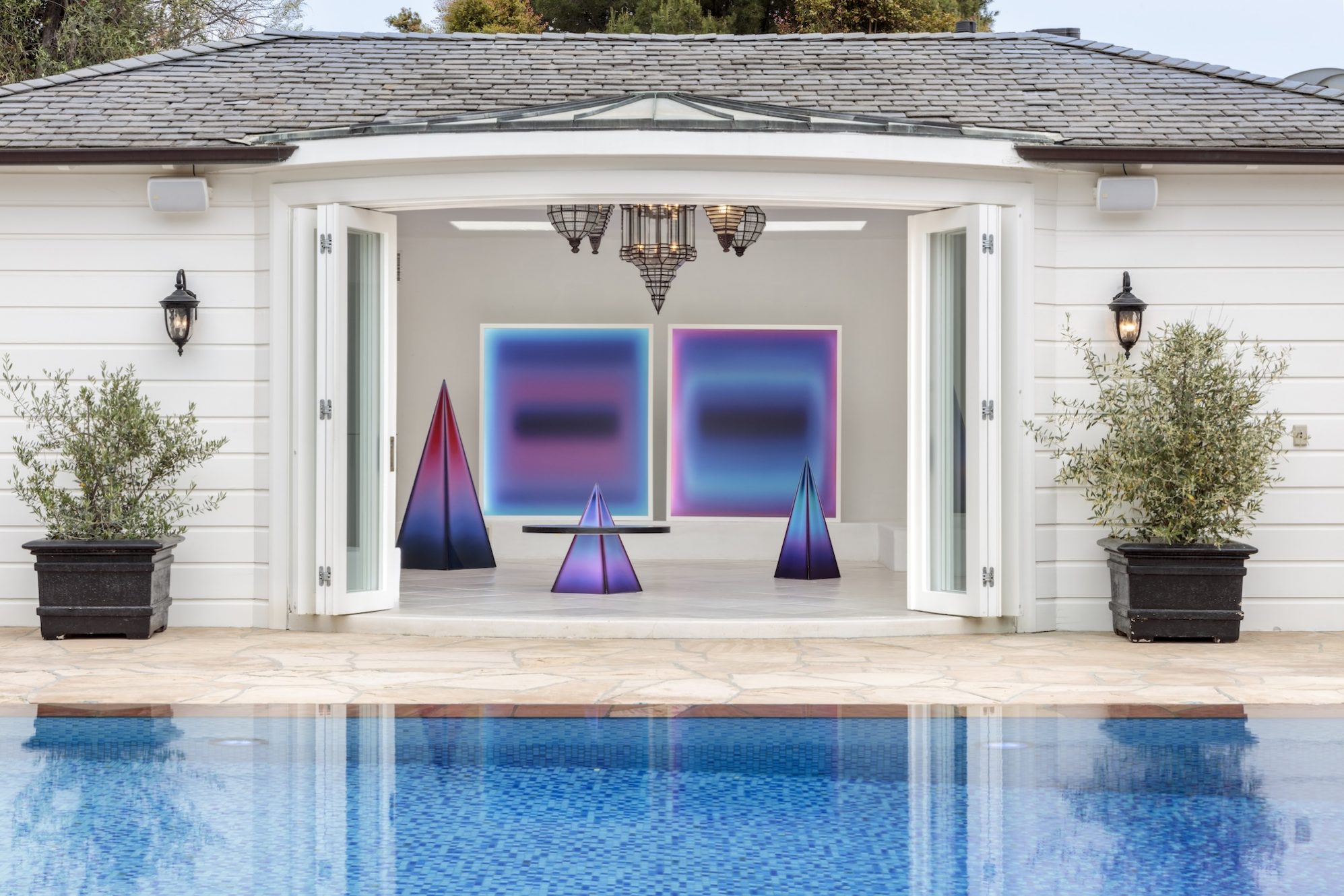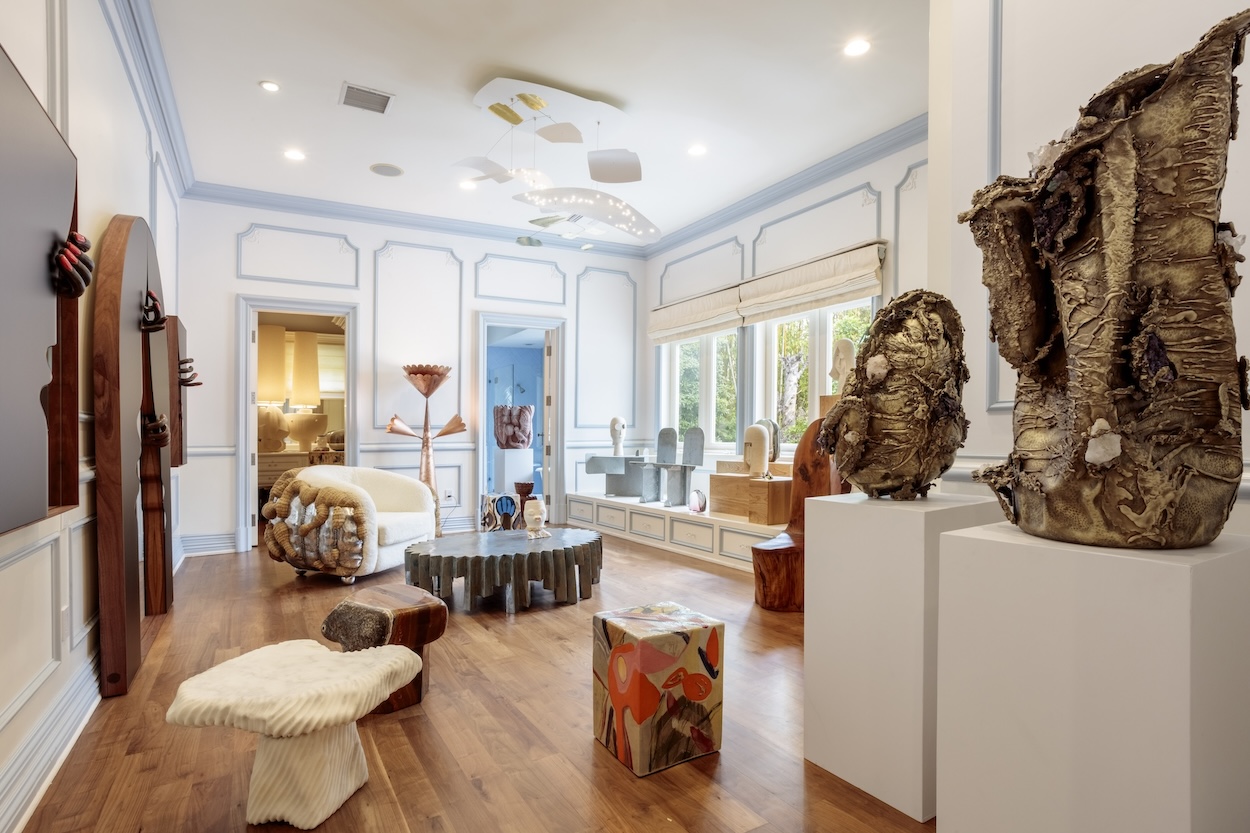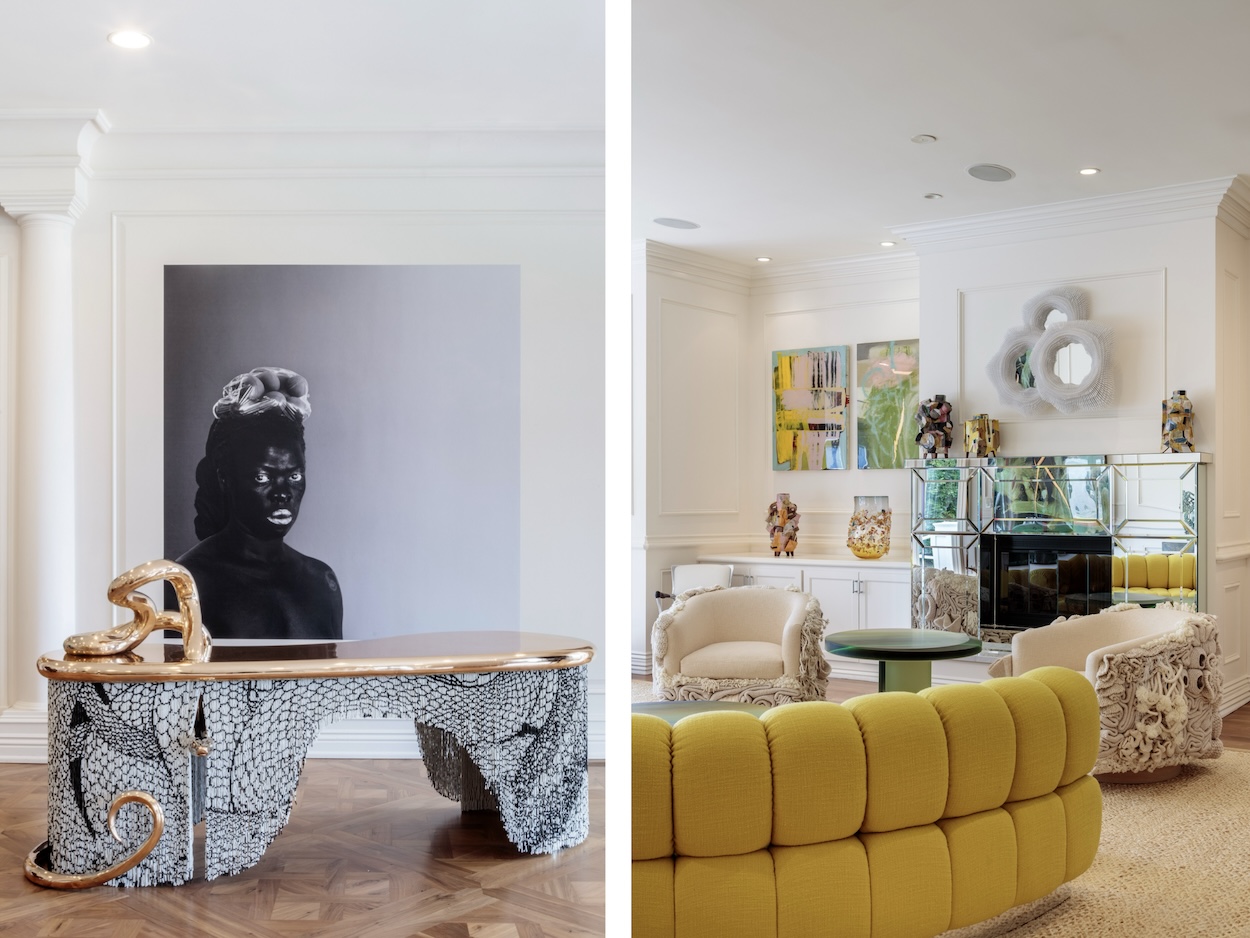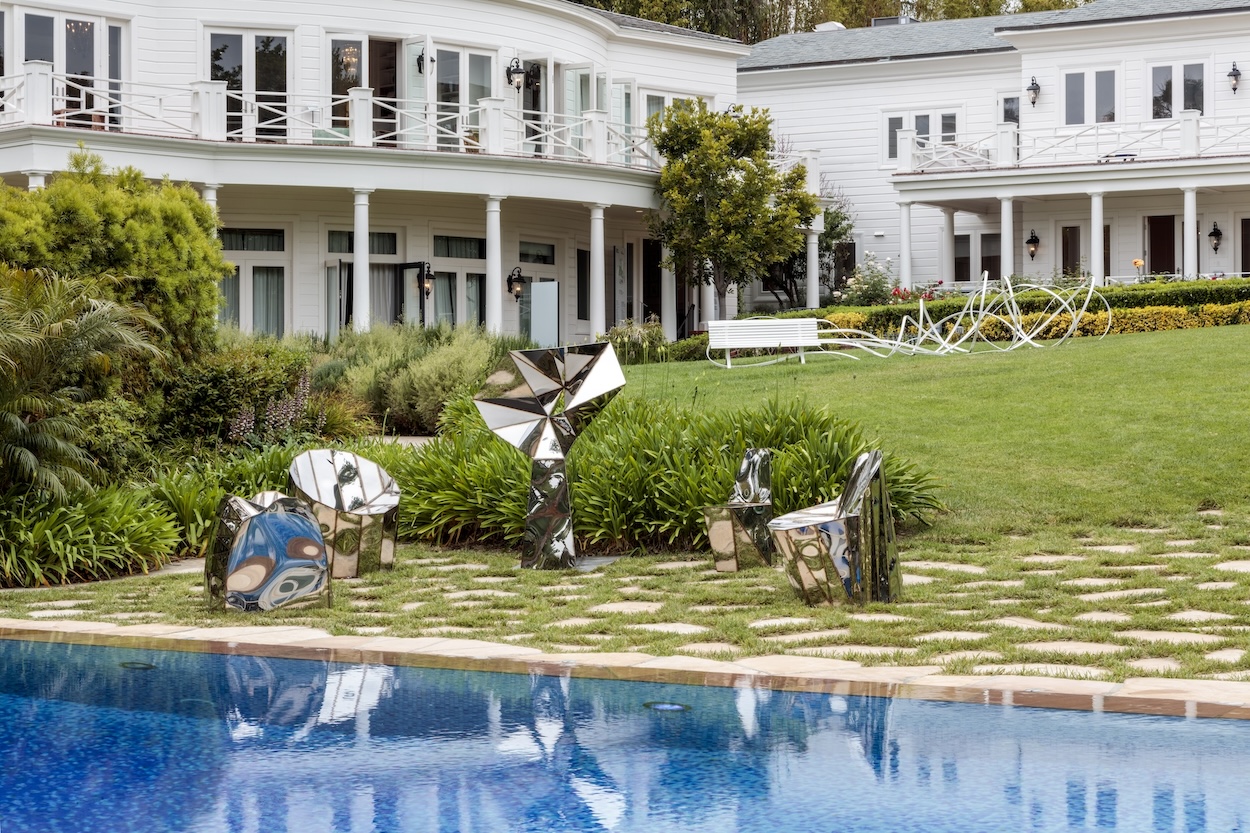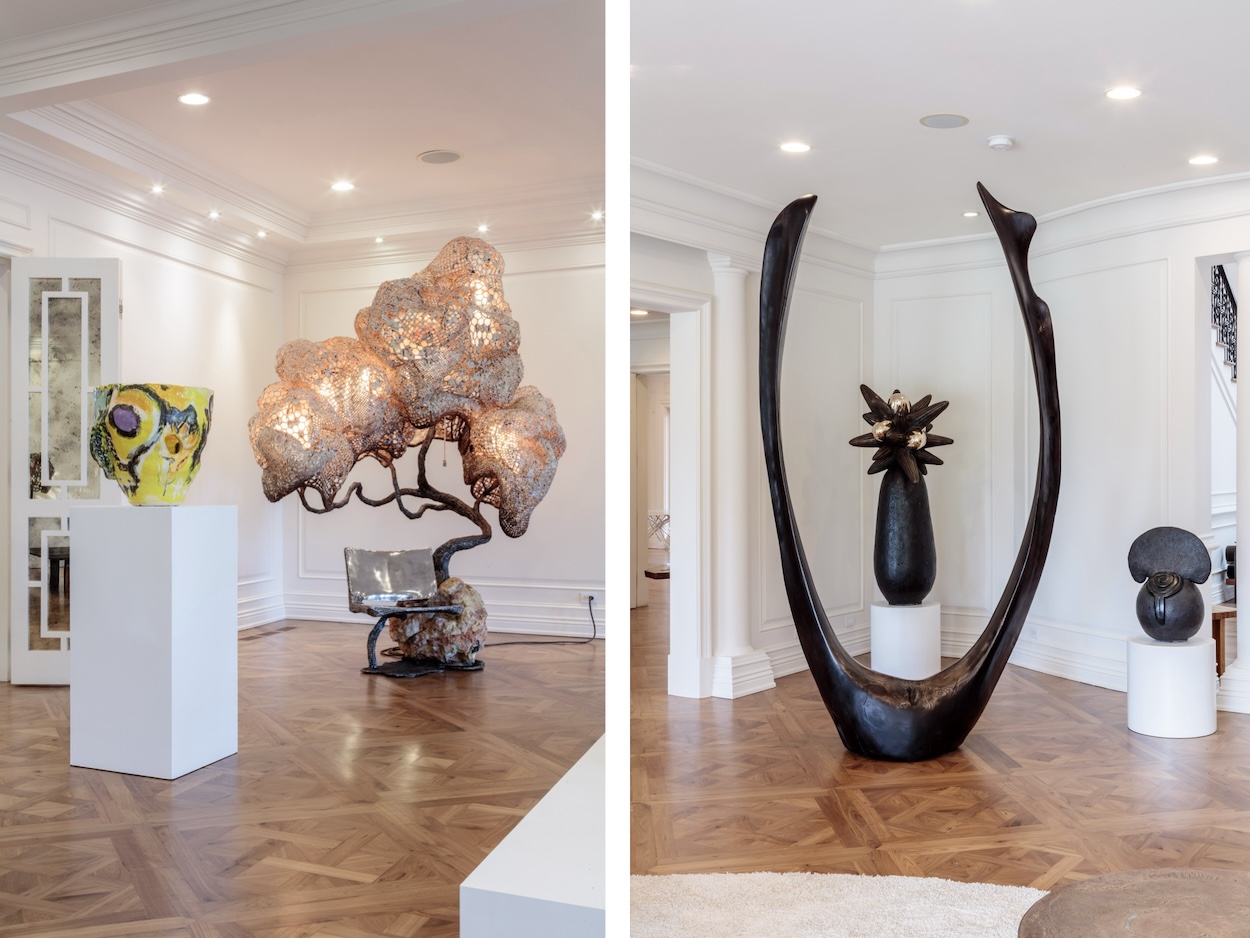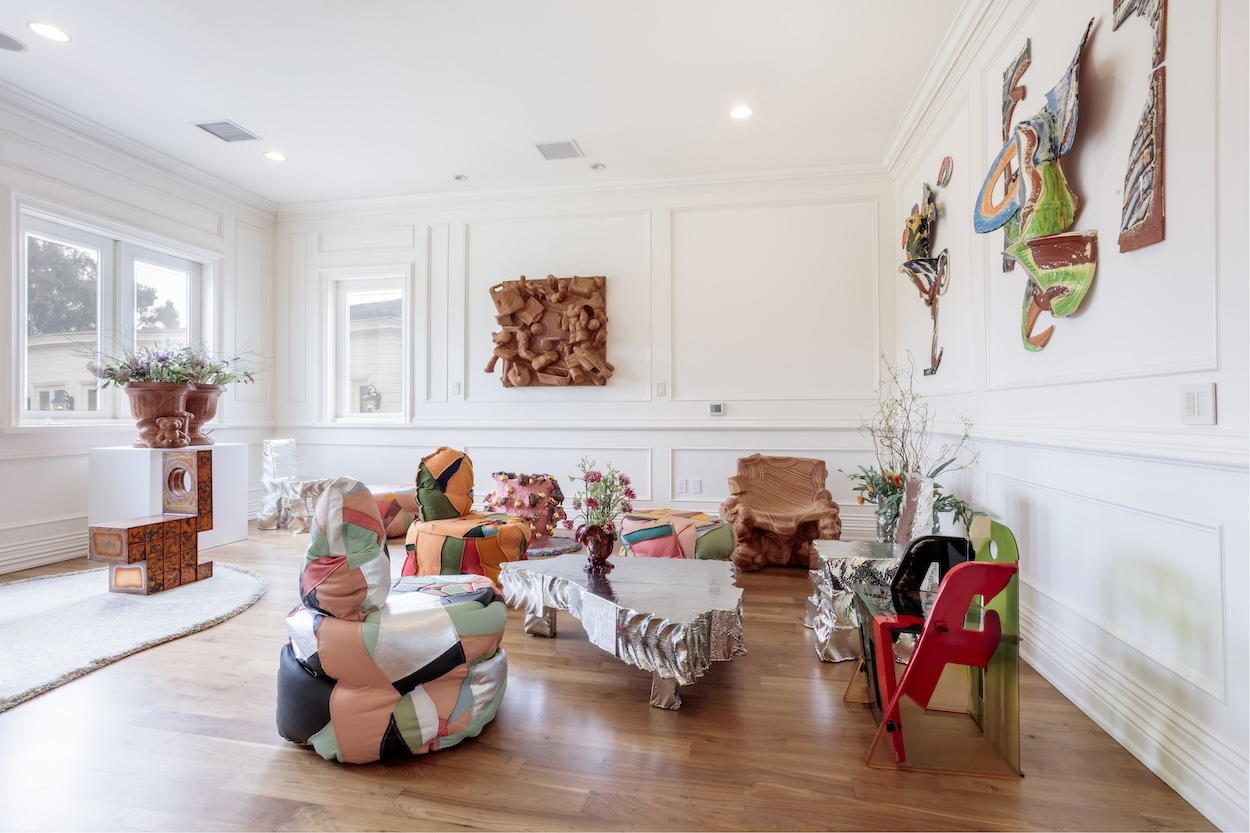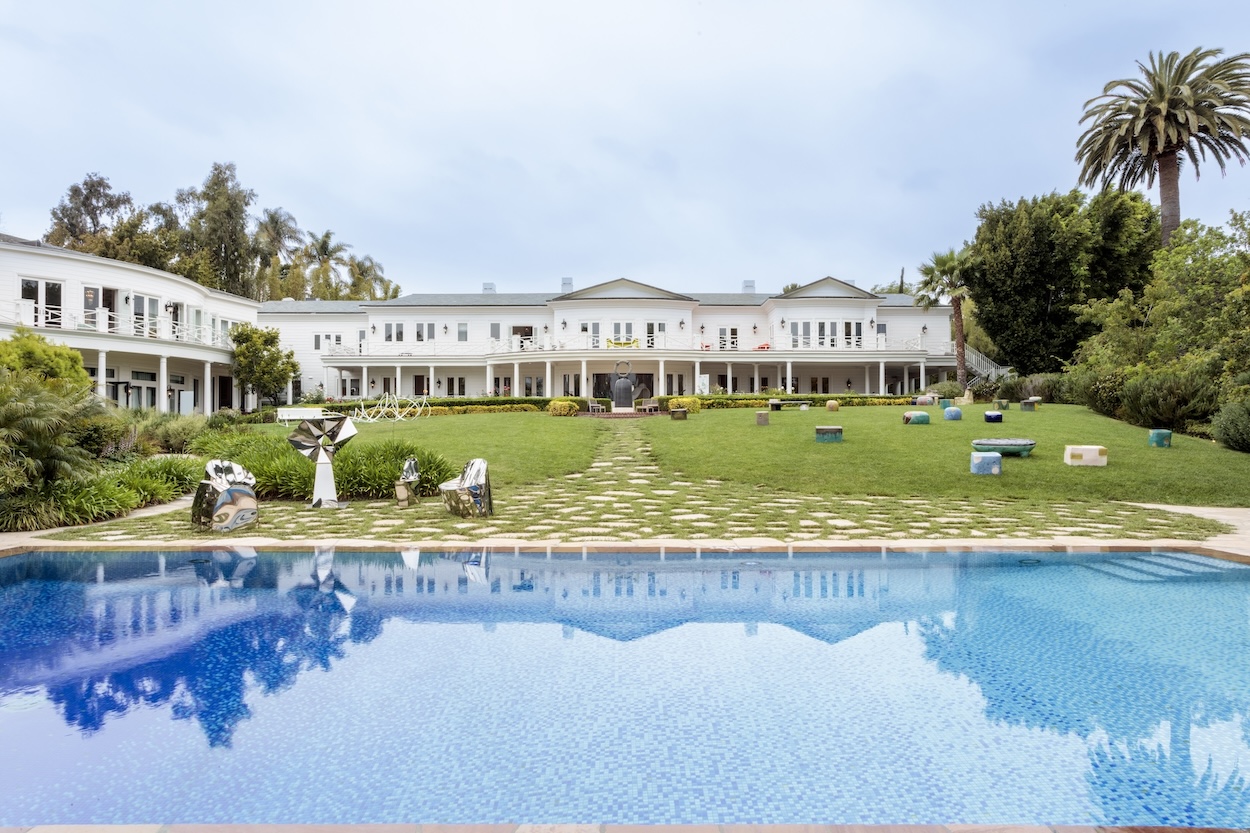When it comes to collectible design, few markets are more promising than Los Angeles. The scene has all but exploded recently thanks to a dynamic mix of blue-chip design galleries (Friedman Benda, Southern Guild, Marta) planting roots there and marquee fairs like Frieze and Felix cementing the city’s art week as a must-attend fixture on the cultural calendar. This energy caught the attention of Design Miami, the global forum that has undergone a tip-to-toe rebrand following its recent acquisition by online marketplace Basic.Space. At the same time, the fair was riding the high of a successful debut in Paris this past fall.
Design Miami’s inaugural Los Angeles showcase, which is open until Monday, transforms a private 1938 Holmby Hills estate designed by esteemed architect Paul Revere Williams (and once occupied by Max Azria) into a veritable showpiece for today’s most illustrious collectible designers. The three-acre, 30,000-square-foot property is an ideal location for the exuberant works on display, and follows the same formula established in Paris, where it took over an 18th-century hôtel particulier once home to Karl Lagerfeld. Programming is similarly dialed into local lore—Williams shaped Southern California’s vernacular, designed sumptuous homes for Frank Sinatra and Lucille Ball, and even envisioned the font for the Beverly Hills Hotel.
In that vein, the galleries selected by newly appointed curatorial director Ashlee Harrison hew closely to nostalgic themes like Golden State eclecticism, the postwar design boom, and car culture. For example, R & Company is showing works by West Coast designers like Rogan Gregory and Jolie Ngo; Friedman Benda is following suit by mixing local talents like Carmen D’Apollonio with designers like Darren Romanelli who directly reference pop culture. Gallery Fumi, whose stateside debut took over Sized Studio earlier this year, recreates a domestic setting—one clear standout is a pair of mirrored wall sculptures by Sam Orlando Miller in hues inspired by the California sunrise and sunset. Over at The Future Perfect, which responded directly to Williams’ stately interiors, don’t miss Genesis Belanger and Bower Studios’ series of acid-etched bronze mirrors that feature sets of hands emerging from behind curtains.
The works on view at Harrison’s Podium section contain an eclectic mix that reaches back into design history’s most pivotal moments, spanning bronze Alberto Giacometti lamp stands courtesy of Salon 94 to Maarten Baas’s recent Children’s Clock from Carpenters Workshop Gallery. They also spark dialogues about Hollywood golden-age glamour, cultural heritage, and tech innovation. Ingrid Donat’s Commode aux Engrenages evokes the mechanical beauty of the industrial age as depicted in Charlie Chaplin’s film Modern Times; Andile Dyalvane wields black clay and wedge timber to evoke the landscapes and narratives of his South African homeland. A 1968 chair by Maria Pergay, inspired by the spiral peeling of an orange, speaks to her radical use and sophisticated application of stainless steel. And an Instagram-friendly chair by Estudio Campana and KAWS elevates stuffed toys into high art.
“The intimate residential setting provided an opportunity for galleries to respond directly to the distinctive interiors—through harmonic conversation or striking contrast,” Jen Roberts, Design Miami’s CEO, tells WWD, “proving for an engaging new fair format that we’ve never experienced before.” Roberts may be onto something. The hype of Design Miami’s editions in Paris and L.A., the three-hour-long queues that Alcova created outside Villa Borsani at Milan Design Week, and the intrigue of upstart art fair Esther’s leftfield location at the New York Estonian House may lead one to believe that forgoing booths in favor of unconventional settings is a model worth pursuing.
Design Miami LA will be on view until May 20.
